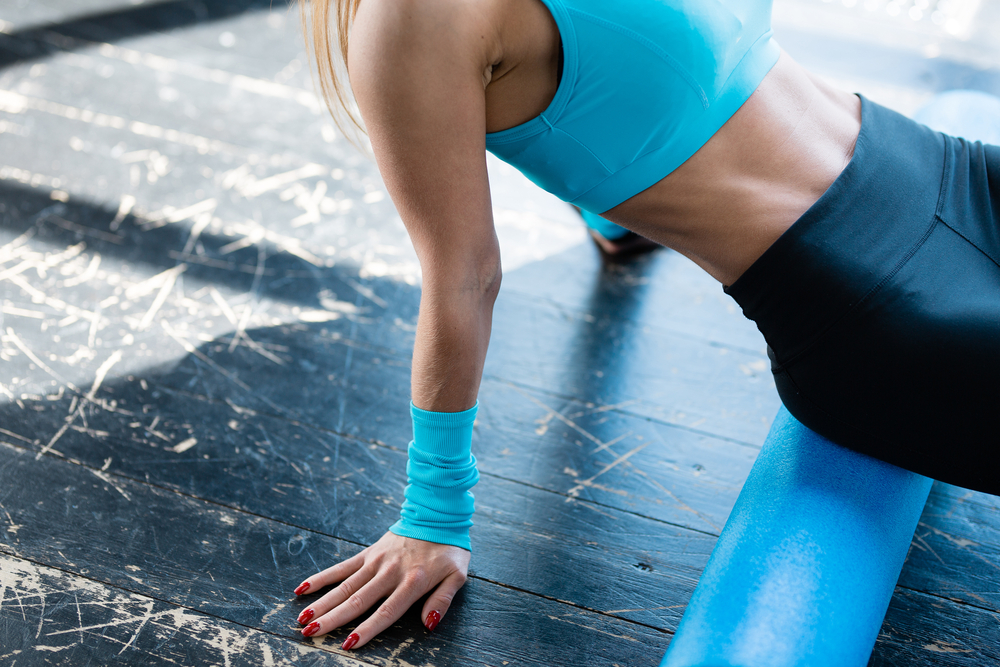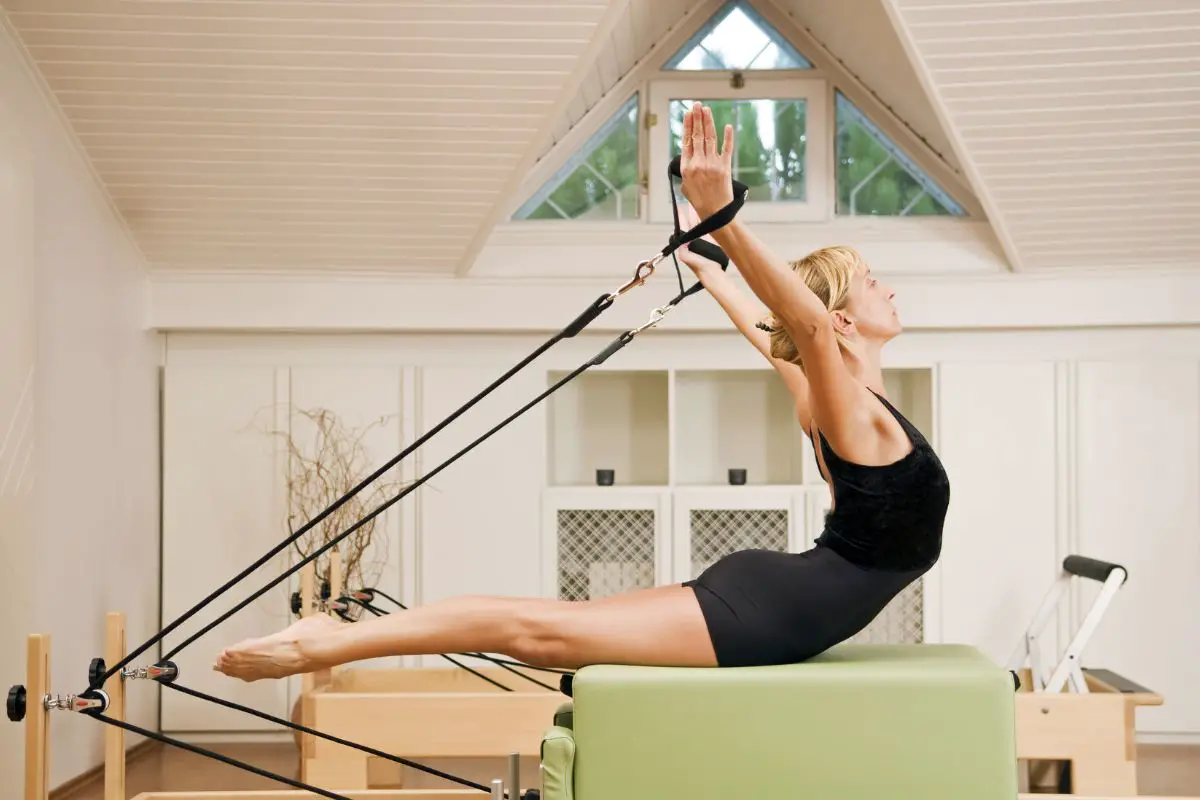Health

We all know the great health benefits that come with performing Pilates on a regular basis. These exercises can help strengthen your core muscles, improve mobility, and flexibility, as well as benefit your overall well-being.
One common query regarding Pilates is if it can help aid your digestive system, too. In other words, can it make you poop and ease constipation?
If you have been suffering from digestive issues in recent times, then you are probably looking for answers to help with your gut. And, if you have ever had stomach or digestive problems, you’ll know you’d do anything to stop the discomfort and pain.
Whilst we all know that detoxing, drinking more water, and avoiding certain foods can help our digestive systems work normally, many don’t even consider Pilates as a solution to their digestive woes.
Today, we are going to find out if and how Pilates can aid your digestive system and answer that all-important question – can Pilates make you poop? Let’s get down to business and find out.
Pilates – How Does It Aid Digestion?
During the fall and winter months, we typically find ourselves gorging on unhealthier, more hearty meals and snacks. Therefore, it’s during this time of year you’re more likely to suffer from a digestive issue.
Whilst the odd treat here and there is no issue for most of us, sometimes, we may experience unpleasant bowel movements and digestive problems.
If you have a digestive problem, one of the best things to do is to detoxify. How? By increasing your body’s movements. By doing this, you can relieve your body of toxins and waste products.
In turn, increased movement can calm the digestive system and even reduce inflammation caused by certain issues.
Pilates is more than a simple movement, of course.
Although this form of exercise concentrates on various muscles, such as the abdominal, inner and outer thighs, lower back, buttocks, and hips, its primary goal is to draw attention between the mind and body’s connection to one another.
So, not only can Pilates help you grow stronger, but it can improve concentration, flexibility, breathing, control, and mobility.
Altogether, these can benefit the digestive system. It all begins with breathing.
Pilates Breathing Exercises
To point out the obvious, we all breathe (duh!). However, the majority of us do not breathe as deeply as we could.
Step in Pilates!
Pilates teaches us about the importance of breathing techniques and how they can have an impact on our body and mind.
Just by focusing on your breathing whilst performing different Pilate positions help to massage your abdominal organs and even strengthen your diaphragm muscles.
This is known as “lateral breathing.”
This technique sees you inhale through your nose fully, whilst simultaneously imagining and feeling your breath expand your rib cage in a lateral direction.
Then, you exhale through your mouth, as if you’re blowing into a straw. When performing lateral breathing, you need to envision your rib cage trying to squeeze together with your belly button sucked into your spine.
In just a few minutes, you should be able to feel your core tighten. This will also calm your organs and massage them into a more relaxed state.

Pilates Movements To Aid Digestion
It’s not only Pilates breathing exercises that can help “make you poop.” The core method of Pilates revolves around certain movements and many of these can improve your digestive system.
Below are a number of Pilates movements to help ease your digestive system and hopefully relieve some discomfort.
Roll Up
Similar to the Crunch Pilates move, the Roll Up is a comprehensive movement that may help you in the restroom.
- Start by laying on your back on the ground. Your legs should be straight with your arms on the floor behind you.
- Inhale deeply (feel your rib cage expand). As you exhale, move your arms back over your head in an arc formation. After your arms have gone past a 90-degree angle, start to curl your head, neck, and shoulder blades off the ground.
- Take a moment to pause and then take another deep inhale of breath. For your next exhale, roll your body and feel your ribs slip toward your pelvis.
- Once you have rolled all the way up, stretch your fingers to your toes, maintaining a curved spine.
- To lift your spine from your pelvis, inhale and lift through your lower and middle spinal region, neck, and head. Do this until you are once again sitting up straight on the floor.
- Slowly exhale and roll back down. Repeat from the beginning again and do as many reps as you feel comfortable with.
Criss Cross
This movement requires your body to twist, which can be hugely beneficial to your digestion.
- Start by lying with your back on the floor. Lift your legs, so your knees are directly over your hips and are at a 90 degrees angle.
- Place your hands behind your head with your elbows out wide. Curl your neck, head, and shoulders off the floor as you exhale. At the same time, twist your upper body to the right and stretch out your left leg.
- To rotate your whole body through the center, simply inhale.
- For your next exhale of breath, twist your upper body to your left. Then, extend your right left and inhale to return to center again.
- Carry on with this twisting movement from your right to your left for 8 to 10 reps. Just remember to continue breathing correctly with each twist. Your abdominal organs will get nicely massaged.
Pelvic Clocks
Know how to read an analog clock? You’ll find this one easier then!
- Lay on your back with your feet flat on the ground. Your legs need to be bent and hip-distance apart but parallel to each other. Lay your arms beside you with your palm facing either up or down (whatever is most comfortable).
- This is where the analog clock knowledge comes in handy! Envision a clock laying flat on your pelvis front. The 12 o’clock position is at your belly button and the 6 o’clock position is adobe your pubic bone. The bony part of your hips are 3 o’clock and 9 o’clock respectively.
- Now, move your pelvis slowly so 6 o cock is pointing upwards. 12 o clock should have dropped nearer the ground.
- Tilt your pelvis in the opposite direction so 6 o clock is closer to the ground, whilst 12 o clock is higher. This position should form a larger curve in the lower portion of your back.
- Continue to move your pelvis (imagine rolling a marble on the clock face) and then go in the opposite direction.
In Summary
There are a range of Pilates exercises that can potentially ease digestive troubles. Above are just a few Pilates moves to try, but there are many more that should aid digestion. If you’re unsure, seek advice from a trained Pilates instructor.
We also recommend using the Pilates Reformer as this has been proven to help power up the digestive system, too.





